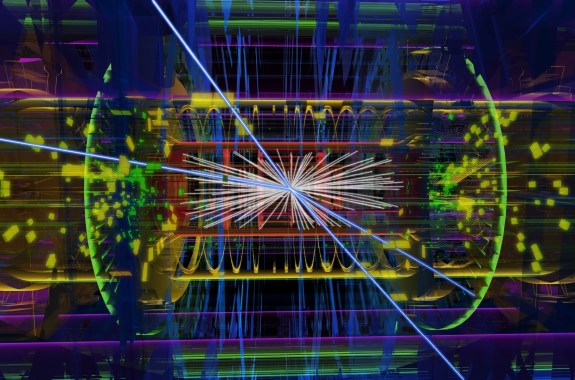As Science Friday’s director and senior producer, Charles Bergquist channels the chaos of a live production studio into something sounding like a radio program. He coordinates in-studio activities each week from 1-4. And then collapses. He also produces pieces for the radio show. His favorite topics involve planetary sciences, chemistry, materials, and shiny things with blinking lights.
Charles has been at Science Friday longer than anyone on staff except Ira, and so serves as a repository of sometimes useful, sometimes useless knowledge about the program. He remembers the time an audience member decided to recite a love poem during a live remote broadcast, the time the whole staff went for ice cream at midnight in Fairbanks, Alaska, and the name of that guy Ira is trying to remember from a few years back who did something with space.
He hails from southeastern Pennsylvania and worked for a while as a demonstrator at the Franklin Institute, Philadelphia’s science museum (favorite devices: Maillardet’s Automaton, the stream table, the Chladni plates). He has a degree in chemistry from the University of Delaware, home of the Fighting Blue Hens, and a master’s in journalism from New York University’s Science, Health, and Environmental Reporting Program. However, he attended the program prior to the addition of ‘Health’ to its name, which may explain his slight unease when covering medical topics.
Outside the walls of Science Friday, he enjoys backpacking, camping, cooking not-entirely-healthy things, reading escapist fiction, and trying to unravel his children’s complicated stories.
Researchers Dig In to the Genetics of Burrowing
Complex behaviors, such as the way some mice dig burrows, can be affected by changes to just a handful of genes.
41:46
Looking Back on a Year in Science
What are your picks for the top science stories of 2012?
Book Challenges Kids With Science-Based Mysteries
A father/daughter team has written a series of brain-teasers for science-minded students.
Is It Possible to Create a Mind?
What does intelligence really mean? Can we build a machine that thinks as humans do?
Unlocking a Lake’s Bacterial Secrets, Beneath 20 Meters of Ice
Bacteria locked under Antarctic lake ice may shed light on life’s limits, and the possibility of life on other worlds.
Ig Nobel Prizes Celebrate Somewhat Suspect Science
Ponytail physics, the sloshing in a coffee cup, and an opera about the universe feature in this year’s Ig Nobel Prize ceremony.
Looking Back on 2012 Election Technology
Despite a national push to electronic voting, why did it take days to tally the vote in some states?
Searching for ‘The Particle at the End of the Universe’
Physicist Sean Carroll of Caltech talks about the search for the Higgs boson, and what comes next.
Fifty Years Ago, a Bright Idea
Inventor Nick Holonyak describes the creation of the visible light-emitting diode, or LED.

